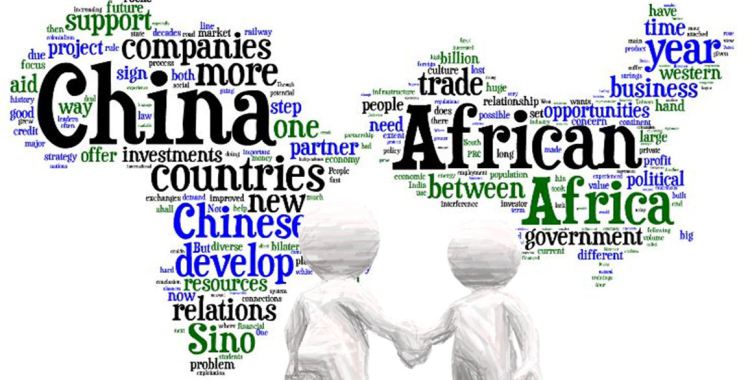By: Ojuederie Eruke.
Fifteen years after the United Nations came up with the 8 Millennium Development Goals (MDGs), which basically focused on issues bothering on poverty alleviation, Education, Gender equality, Child mortality, Maternal health, Disease, The environment, and Global partnership, the transition to Sustainable Development Goals (SDGs) does not seem to spark up much light in the African continent. For the common man, it tends to reflect only a modest expansion of what was listed as Millennium Development Goals, with little or no impact.
Given that the UN has recently rolled out 17 SDGs which include No poverty, zero hunger, good health and wellbeing, quality education, gender equality, clean water and sanitation, affordable and clean energy, decent work and economic growth, industry, innovation and infrastructure, reduced inequalities, sustainable cities and communities, responsible consumption and production, climate action, life below water, life on land, peace, justice and strong institutions and partnership for the goals, in September 2015, there is a huge question as to what these goals hold for Africa. The future may remain bleak for the man on the street if the right steps are not employed to ensure that set targets are met.
Taking a look at the successes of the MDG’s from its inception in the year 2000 to 2015, reports from the United Nations information desk reveals that:
- Poverty: the number of people living on $1.97 per day reduced from 1.9billion in1990 to 836million in 2015
- Education: there is a rise in primary school enrollment with 52% in1990, 60% in 2000, and 80% in 2015
- Gender equality: Countries around the world recorded an increased involvement in parliament. Also, two-thirds of developing countries have achieved gender parity in primary education.
- Child mortality: there has been a reduction in child mortality
- Maternal health: has been reduced to half of the target
- Disease: in the aspect of disease, the set target has not been met
- Environment: Half of the target now have improved drinking water
- Global Partnership: partnership has increased
Although these records show that there was notable progress with the MDG’s, the rural dwellers and vulnerable people especially in Sub-Saharan Africa, are still being left out.
In Africa according to the UNDP reports, Gambia reduced poverty by 32% between 1990 and 2010, while Ethiopia reduced its poverty rate by one-third focusing on agriculture and rural livelihood. Niger’s school of Husbands has also recorded some success in transforming men into allies in promoting women’s reproductive health, family planning and behavioural change towards gender equality. In the area of environment, Cape Verde increased its forest cover by more than 6% points with millions of trees planted.
Global partnership and development assistance to Africa remains low at an average of US$47 billion annually.
During Nigeria’s Presidential summit in 2014, a report from the regions revealed that although MDG projects which were put in place recorded few successes, it was rather obvious that those in charge of the projects expected an extension or modification of the program which would give ample time for the projects to be completed.
These testaments however, reflect only a little fraction of the actual target of the millennium development goals as many are yet to benefit from the programme.
The main Agenda of the SDG’s as noted by the UN, is a plan of action for people, planet and prosperity. It also seeks to strengthen universal peace in larger freedom by calling on all countries and stakeholders to engage in collaborative partnership in order to implement this plan.
Be that as it may, the SDGs which build upon the Millennium Development Goals are meant to complete what the MDG’s did not achieve especially in the area of human rights for all, gender equality and the empowerment of all women and girls, under the three broad aspects: the economy, society and environment.
African Leaders have in recent times demonstrated their willingness to tackle poverty challenges by designing their own development solutions under the form of NEPAD programmes and the developmental frameworks and plans, visions and strategies embodied by NEPAD and Agenda 2063.
Speaking in New York in October 2015, the head of the New Partnership for African Development (NEPAD), Ibrahim Mayaki, stressed the need to empower the small-scale farmers who are women to ensure food security.
“We should think about the private sector, including small and medium-size firms, where innovation is taking place,” Dr. Mayaki said.
These new goals seem to take into consideration Africa’s interests, much more than the MDGs did with emphasis targeted to situations many Africans can relate to.
Both the SDGs and MDGs place poverty eradication at the top of the agenda. This shows that it is considered by Africa and the developing world in general to be one basic requirement. In fact, actualizing that goal will solve more than half of the issues listed as SDG’s.
Another feature of the plan for the SDGs as distinct from the MDGs is the grouping of peace and security issues under the development category. This stems from the fact that conflicts erupt whether countries advance in their development or not. For Africa, putting peace and security into the SDGs directs attention to conflict-preventing factors such as equity, inclusiveness and rule of law.
Unlike the MDGs, the SDGs will apply equally to all countries in terms of finance. One question is whether Africa, which has long been an area of concentration for official development assistance (ODA), will see less incoming aid since the continents position as privileged beneficiary of aid may already be slipping. According to the Organization for Economic Co-operation and Development (OECD), official bilateral aid to Africa fell by 10 % in real terms in 2012 and by about 5% in 2013, despite an increase in ODA to all developing countries for an all-time-high in the latter year. In Africa, incoming foreign direct investment now surpasses ODA.
As experts have advised, a simple substitution of private resources for public funds may not be the best way to characterize African options. The Common African Position takes into account a blend of finance sources. These include improving traditionally low domestic tax collection rates, tapping global financial markets, stepping up intra-African trade, South-South cooperation and public-private partnerships.
Similarly, the SDGs also reflect extra elements of importance for Africa, like the agri-business dimension, the relevance of trans-boundary water management, and the value addition potential of fisheries. The agriculture sector is still mostly treated.
As the UN seeks methods of reaching the set target of the SDG’s, it is also very necessary for countries to work towards achieving these goals at all cost in line with the sole aim of strengthening universal peace and prosperity.
UN Secretary-General Ban Ki-Moon has said “we need to tackle root causes and do more to integrate the economic, social and environmental dimension of sustainable development”.



